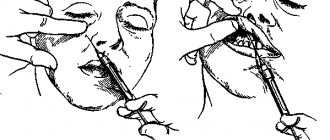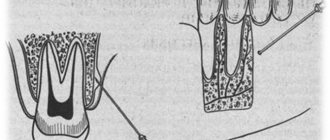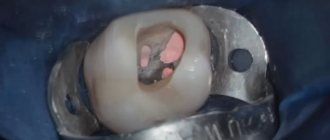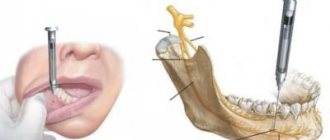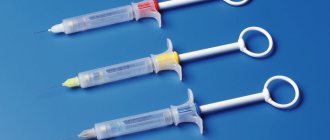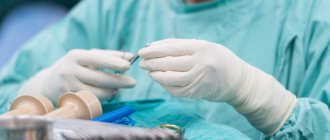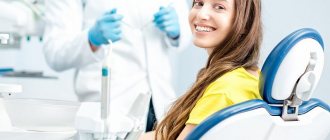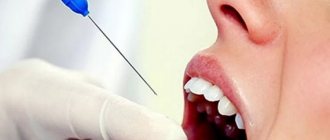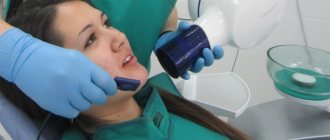None of the patients will argue with the fact that anesthesia should be not only painless, but also comfortable. Dentists will add a number of wishes to this - it should be safe, predictable and easy to carry out.
With the advent of the STA system developed by Milestone, all of these requirements have become feasible.
For the first time, the rate of anesthetic solution delivery is controlled by DPS dynamic pressure sensing technology rather than by the physician's finger pressure.
Ergonomic design reduces muscle strain on the dentist's hands compared to a traditional syringe.
The device has 3 modes for controlling the dose of anesthetic, allowing for precise hydropreparation of soft tissues, which reduces the risk of complications during anesthesia.
The specially designed lightweight and ergonomic SafetyWand allows you to gently advance the needle to the site of anesthetic delivery, reducing its deflection.
The unique patented tip safety system reduces the risk of accidental injury to the doctor's hands with the needle.
New effective P-ASA anesthesia
The STA Injection System is excellent not only for single tooth anesthesia, but also for multi-tooth anesthesia techniques with a single injection (such as P-ASA).
P-ASA is a palatal injection that can numb the six anterior teeth and surrounding soft tissue on both the palatal and labial sides without causing collateral numbness to the patient's upper lip and facial skin. This simple technique replaces at least four infiltration anesthesia and a palatal injection, and is indispensable in aesthetic dentistry for the manufacture of composite restorations, veneers and crowns, since the dentist can immediately assess the patient’s smile line.
The P-ASA technique can also be used during endodontic and periodontal interventions, as well as implantation.
Injection using the P-ASA technique is absolutely painless due to the possibility of constant control over the position of the needle and the speed of anesthetic injection, which does not exceed the patient’s pain threshold.
Treatment of caries
Dental caries is the most common dental disease.
According to statistics, about 90-98 percent of the population encounters carious lesions of varying intensity. At first, minor and practically asymptomatic damage to the enamel leads to serious complications, loss of teeth, disruption of facial aesthetics, disorders of the digestive system and other problems. The disease is also dangerous because, having manifested itself in a certain area, it causes a general imbalance in the microflora of the oral cavity, thereby increasing the risk of damage to other teeth. Treating uncomplicated (simple) tooth decay is a quick and inexpensive way to keep your smile healthy. In most cases, the procedure is performed in 1 visit and takes about an hour.
If the infection was able to destroy the hard tissues of the tooth and penetrated into the pulp (neurovascular bundle) and deeper (through the root canal to the root apex), the dentist will diagnose complications of caries. According to the degree of complexity there are:
- Pulpitis
- Periodontitis
Advanced forms of caries can be aggravated by fistulas, fever, swelling, headache and other unpleasant symptoms.
Treatment is possible in various ways, but will take much longer than in the initial stages. The cost of treating complications, as well as the price of treating deep caries, will be higher than with minor intervention at the superficial and middle stages. Untimely intervention leads to the formation of cystogranulomas, tooth loss, longer and more expensive restoration of the dentition: installation of bridges or removable dentures, or implantation, followed by prosthetics.
Differences between intraligamentary STA-modified anesthesia and traditional techniques
The following are the main differences between the traditional intraligamentary anesthesia technique performed using the Ligmaject syringe and the STA-modified technique.
– The traditional technique is essentially the “last hope” when mandibular anesthesia is ineffective.
In turn, the STA-modified technique is the main method of anesthetizing any teeth in the upper and lower jaws, and can be a complete replacement for mandibular and infiltration anesthesia, accompanied by collateral numbness of the patient’s lip, tongue and facial skin. – With the traditional method of intraligamentary anesthesia, carried out using a syringe, a small amount of anesthetic is injected under high pressure, resulting in a short duration of pain relief.
With the STA-modified technique, a larger amount of anesthetic is injected with minimal pressure, which provides longer anesthesia - up to 40 minutes.
– The traditional technique of intraligamentary anesthesia is difficult to perform, since the tissues in this area are highly dense, and the speed of administration of the anesthetic depends on the force applied by the dentist (which may differ from one doctor to another).
The STA-modified technique is very simple, since the doctor simply advances the bevel of the needle in the gingival sulcus along the tooth root until resistance is felt. The rate of anesthetic delivery is controlled by a computer, so it is constant and does not exceed the patient’s pain threshold.
The dentist can always monitor the correct placement of the needle during the injection process using the feedback provided by the STA device through visual and audio signals.
– The traditional technique of intraligamentary anesthesia is painful for the patient and often leads to soft tissue damage and bone resorption, which results in postoperative discomfort. The STA-modified technique is absolutely painless: clinical studies have shown that it does not cause soft tissue damage or bone resorption, and discomfort after its use is minimal or completely absent.
– STA, through the use of dynamic pressure control technology, allows the dentist to constantly monitor the procedure of intraligamentary anesthesia to achieve a successful result.
In this case, the operator constantly receives messages about reaching the injection site (the area of the circular ligament), changing the position of the needle, its mechanical blocking or excessive pressure.
Today, patients have an alternative: the STA system.
Computer anesthesia is a local, imperceptible anesthesia using a device controlled by a computer, the so-called “single tooth anesthesia.” It is approved by the American Dental Association and recommended as the optimal method of pain relief.
This anesthesia is liked by those patients who are afraid of injections, but at the same time want to feel comfortable in the dentist's chair. This is especially important when treating children. When using STA, the child does not experience fear of a traditional syringe, and the anesthesia process itself occurs as delicately and effectively as possible. Thanks to this, the dentist can calmly carry out all the necessary manipulations and leave only positive impressions on the little patient after the appointment.
Infiltration anesthesia
The computer-controlled flow rate of the anesthetic solution makes conventional infiltration anesthesia more effective, predictable and comfortable for the patient (Fig. 5).
Rice. 1-5. STA technology is indicated for: anesthesia of the anterior and middle superior alveolar nerve (1), the anterior group of teeth of the upper jaw - from canine to canine (2), as a primary method of anesthesia (3), for anesthesia of the inferior alveolar nerve (4) and as conventional infiltration anesthesia (5).
Our advantages
Our dentistry treats dental caries in Moscow (Ramenki district) at affordable prices. We cooperate directly with many manufacturers of dental materials, avoiding intermediaries. This allows us to provide you with genuine European quality without putting an extra strain on your budget. Polite and helpful staff, comfort and convenience are at your service. Come visit us and appreciate the advantages of the center [email protected] :
Quality of treatment
- Personality. Professional approach to each individual case.
- Subsequence. Medical procedures are carried out only after a full diagnostic examination and agreement on the treatment plan and cost. If necessary, specialists from related fields (periodontist, surgeon, implantologist, orthopedist, orthodontist) will be invited to a consultation. The price of dental treatment depends on the stage of development of caries. The sooner you contact your dentist, the easier and cheaper it will be to get rid of the problem.
- Qualification. The appointment is conducted by an experienced specialist who is fluent in modern and classical techniques in the field of endodontic, therapeutic, and aesthetic dentistry.
- Certificates. We work only with certified drugs. Three-dimensional obturation with liquid gutta-percha (work in the canals). For direct restoration of a damaged crown, innovative nanocomposite filling materials from leading brands (USA, Europe, Japan) are used.
- Guarantee for all types of work.
Safety
- Multi-stage disinfection and sterilization of instruments and apparatus.
- Disposable instruments.
- Painless. Computer anesthesia STA is the most comfortable treatment of caries in dentistry. Reduced dosage of anesthetic (without compromising the effectiveness of anesthesia), absence of unpleasant sensations after the drug has stopped working.
Technologies
- Diagnostic examination using a digital orthopantomograph Planmeca ProOne.
- Application of optical caries detector, laser.
- Treatment of dental caries under a microscope. The most precise passage of channels, complete mechanical and medicinal treatment, without the risk of complications.
- Ceramic inlays for restoring a damaged tooth – inlay, onlay (indirect restoration).
Contraindications to anesthesia
Contraindications to local anesthesia in dentistry: allergies to any drug, cardiovascular and endocrine diseases, bronchial asthma, liver failure, taking beta-blockers, tricyclic antidepressants, mental illness, recent coronary bypass surgery, trauma to the maxillofacial area .
Temporary contraindications to dental operations under anesthesia:
- drinking alcohol on the day of surgery or the day before;
- colds;
- period of menstruation in women due to deterioration of blood clotting.
Anesthesia for bronchial asthma
in dentistry requires special knowledge and training from the doctor. This is one of the cases when safe anesthesia in dentistry is necessary.
If a patient with bronchial asthma needs dental treatment, before starting the procedures, the dentist will refer him to an allergist to clarify the status and contraindications. It is necessary to clarify what medications the client is using. In this case, before treatment, premedication is mandatory, either as prescribed by the allergist, or, in the absence of these, with Xezazal 5 mg, Zyrtec 10 mg or Kestin 10 mg 5 days before surgery, on the day of admission and 5 days after, 1 tablet 1 once a day. Immediately before dental procedures, you need to inhale a fast-acting drug from the salbutamol or fenoterol group (Ventolin, Berotec).
If an attack of suffocation develops, at the beginning of which chest pain, coughing or sneezing appears, then the inhalation shortens, the exit lengthens, wheezing is heard, the patient becomes anxious and cannot speak. The patient leans forward, rests his elbows on his knees, turns pale, sweats, and his lips turn blue. Exhalation is difficult. During an attack, the doctor should open the windows to allow fresh air in, if there is contact with the allergen, exclude it, give warm water to drink, and help inhale the medicine from the inhaler.
For bronchial asthma, an anesthetic without preservatives, for example, Ultracaine D, is best suited. Acetylsalicylic acid and other substances that provoke bronchospasm, such as morphine and indomethacin, are contraindicated.
Anesthesia without adrenaline in dentistry
Why is adrenaline needed in painkillers? It enhances the effect of the anesthetic by constricting blood vessels and capillaries, so that the anesthetic is concentrated at the injection site. In addition, adrenaline reduces bleeding, so drugs with adrenaline are optimal for operations with large blood losses. The most commonly used drugs with adrenaline are ultracaine, ubistezin and alfacaine.
Adrenaline anesthetic will not harm a healthy person. But if you have cardiovascular diseases (heart attack in the next six months), endocrine disorders (diabetes mellitus) or pregnancy, then adrenaline should not be used. Therefore, anesthetics such as lidocaine, pyromecaine, bupivacaine, trimecaine, prilocaine, and articaine are used. Non-adrenaline anesthetics begin to act more slowly than adrenaline ones, and their effect ends faster. At the same time, the safest anesthesia in dentistry is adrenaline-free.
Price
Preventing deep damage is always easier than treating the consequences. By attending scheduled examinations 2 times a year, you will save yourself from numerous problems. When answering the question of how much dental treatment costs, you need to take into account several factors:
- Intensity. The presence of multiple carious cavities indicates the progression of the disease and requires global intervention and, subsequently, constant monitoring.
- Anatomical location of the damage (treatment of average caries in the cervical area will cost a little more than in the occlusal area). Ulcerations in the interdental space are most often expressed in the area of contact on adjacent teeth, that is, in fact, these are already 2 pathological foci.
- Depth of the lesion: what manipulations will the doctor need to perform to complete the treatment of the unit. The cost of treatment will be announced by the doctor after examination and agreement on the treatment plan.
- Restoring the functionality and anatomy of a damaged tooth. Depending on the situation, restoration is carried out using filling materials, ceramic inlays or a crown.
You can familiarize yourself with our pricing policy and find out approximately how much caries treatment in our dentistry will cost on a separate page of the website, in the “Prices” section.
The doctor will tell you more about the cost after the examination. If you are in the South-West of Moscow, you do not need to set aside a whole day from your busy schedule to visit the dentist. The clinic [email protected] is located within walking distance from the Lomonosovsky Prospekt and Universitet stations. You can visit us during your lunch break, after work or on weekends.
- We work by appointment. You don't have to waste time waiting for a dentist appointment.
- Make an appointment for a time that is convenient for you and arrive 10-15 minutes before your appointment.
- The center is open without lunch breaks and seven days a week.
